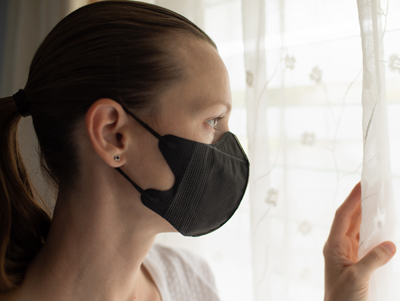After nearly a year of pandemic-related isolation and quarantine issues, many Americans have found that there is a difference between having health and achieving wellness. While many have been able to protect their health by staying home, social distancing, and masking up, they have found that other areas of wellness have suffered. Isolation, while it may be necessary during this time, leads to struggles with depression. The overarching pandemic leads to increased levels of anxiety. Though the terms health and wellness are often used interchangeably, they are not the same. Here’s a closer look at how they differ and how you can achieve both.

What is the Definition of Health

The World Health Organization defines health this way: “A state of complete physical, mental, and social well-being.” This definition does not limit itself to physical health. It also includes mental and social well-being, which would, in turn, include financial stability.
What is the Definition of Wellness?
The Global Wellness Institute defines wellness this way: “The active pursuit of activities, choices, and lifestyles that lead to a state of holistic health.” This is an active pursuit that leads to good health. While it is connected to health, it is not the same thing.
The Main Difference Between Health and Wellness

The main difference between health and wellness is this active process. Someone can be healthy without working for it, but wellness requires active pursuit. Someone may be healthy because their genetic makeup predisposes them to a lean body type and little risk for heart disease, but someone can achieve wellness because they eat a balanced diet and choose to exercise daily.
Though both definitions include non-physical aspects, the active nature of wellness makes it more likely that someone who is pursuing it will focus on their social, mental, and financial health as much as their physical health.
How to Achieve Wellness
So if wellness is an active state, what can you do to achieve it? Consider these tips:
-
Focus on Your Diet

One action you can take right now to help achieve wellness is to focus on your diet. Switching from processed foods to whole foods, focusing on lean proteins and plant-based foods, will improve your health. That said, strive for a balanced approach to your diet. Eating a whole-foods way the majority of the time, and enjoying an occasional treat for a special occasion, helps you achieve a state of balance.
-
Move Your Body

Exercise not only helps you achieve health, but it can also boost your mental health. When you exercise, your body releases hormones that boost your mood. You increase your physical strength and stamina while also improving your emotional health.
-
Rest Well

Wellness is directly connected to quality sleep. When you struggle to sleep, you cannot achieve it. Aim to go to bed at the same time every night and get up at the same time, and take a day off to rest on occasion.
-
Engage with Society

Wellness requires social a focus on your social and mental well-being. Having a strong social network is critical to your overall well-being, so build and protect good, positive relationships. However, if you have relationships that sap your energy and drain your spirit, don’t be afraid to cut ties.
-
Achieve Financial Stability

The worry over money is going to sap your mental and physical energy, so make financial health part of your overall wellness plan. Get financial tools in place so that bills are not a huge worry for yourself. Find ways to put money n savings while dealing with debt, so you can improve your financial situation.
-
Protect Mental Health

Finally, take time to protect your mental health. When you face problems with anxiety, stress, or depression, seek professional help. Mental health is a major component of wellness.
Wellness and health are directly connected, but they aren’t the same thing. By focusing on wellness, you will often achieve health. Take time to understand the difference, and embrace the path of wellness.






